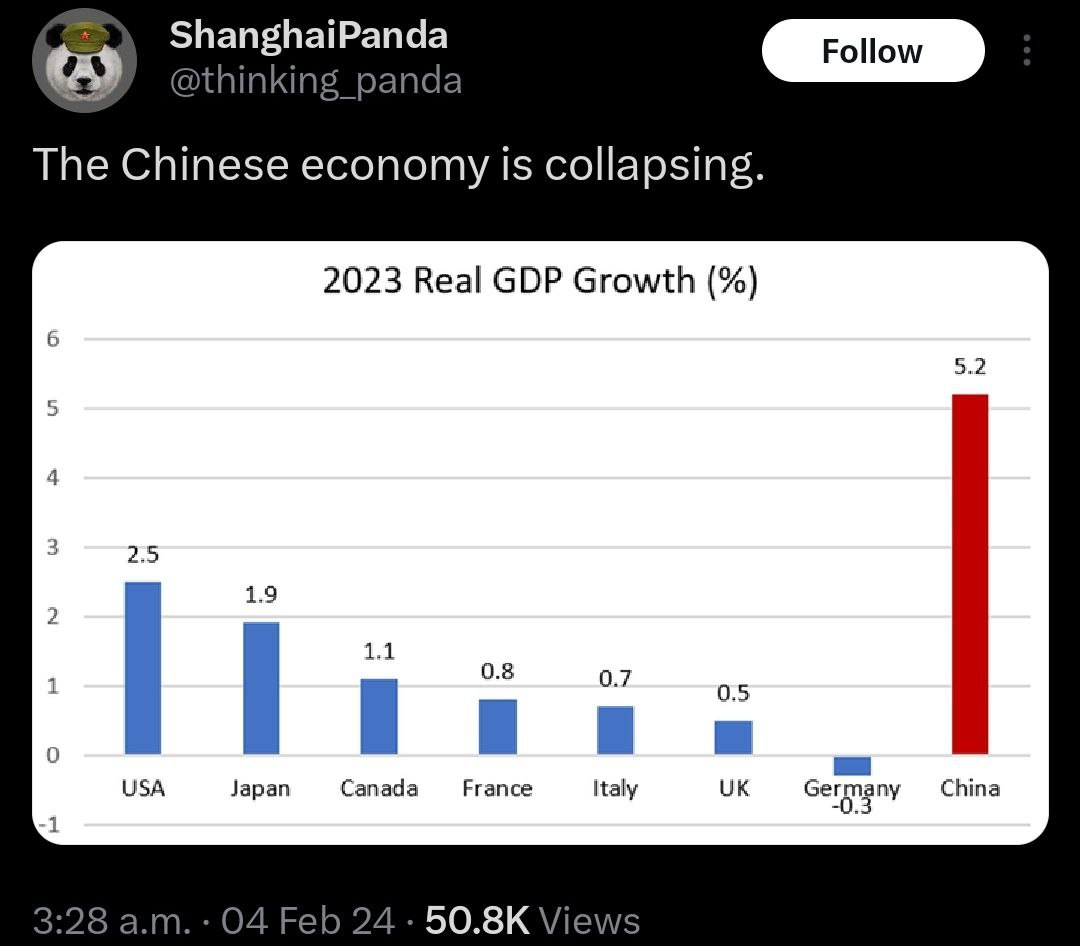this post was submitted on 05 Feb 2024
53 points (90.8% liked)
Memes
3754 readers
392 users here now
Good memes, bad memes, unite towards a united front.
founded 5 years ago
MODERATORS
you are viewing a single comment's thread
view the rest of the comments
view the rest of the comments

Even the most orthodox of economists almost universally agree that growth diminishes as a country becomes more developed since the low hanging fruit of development is exhausted and more capital and resources are necessary for the same amounts of growth.
China's growth rate trending down over time is no more an indication of any sort of stagnation or collapse than one year of growth is an indication of economic strength.
Ironically you're not doing substantially less cherry picking than you're accusing OP of by engaging in shallow single factor analysis.
This is exactly what I'm saying. The growth is coming to a more reasonable level. It's steadily trended down for years now, and will likely end up near US levels if I had to guess.
https://www.statista.com/statistics/263616/gross-domestic-product-gdp-growth-rate-in-china/
If that is exactly what you meant to say then I suggest you put more thought into how you phrase things because that's not the meaning I extracted from your post and I don't think I'm alone in that based on the other responses here.
Furthermore, there is no such thing as an objectively "reasonable" rate of growth for a country since the physical, social, and economic factors behind growth are different for each country.
No, there isn't a "reasonable" rate of growth. Of course. It is just what it is. GDP isn't even useful to an average person. I was only commenting on the OP because it's misleading (on purpose) and there's no need for that.
True, it’s just basic tendency for the rate of profit to fall.